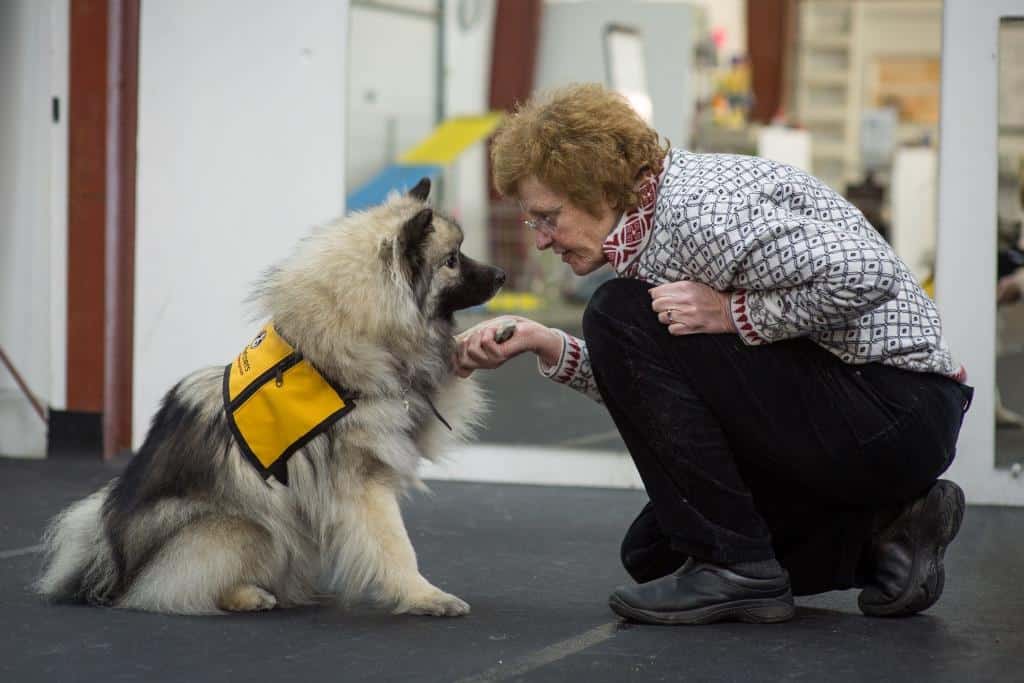



This post is part of a continuing series on preparing your pet for therapy animal work.
You’ve brought a new pet home who you think might be a great therapy animal (perhaps one you adopted from a shelter), and you’ve taken some time to prepare them for experiences they might have as a therapy animal. Now you have the opportunity to focus on specific training for your pet.
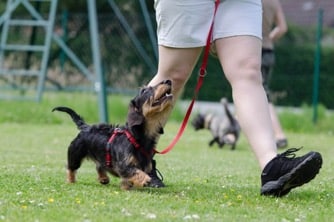
Pet Partners is proud to evaluate and register therapy animal teams. Of course, in order for you and your animal to register as a Pet Partners team, your animal needs to be trained in appropriate obedience skills (appropriate for both your pet’s species and the requirements of our Therapy Animal Program), and the two of you need to demonstrate that you can work together and use these skills to be safe and reliable during therapy animal visits. Pet Partners does not provide training to prospective therapy animal teams, and we don’t require any specific training method, so finding the right training fit for your animal is up to you!
There’s no “one size fits all” method of training that is guaranteed to work for every animal (or every species, which is also a consideration), but no type of training will be effective if your animal isn’t motivated to participate. It’s important to gain an understanding of how your animal “ticks” in order for your team to get the most out of training. Let’s take a look at some common animal motivators.
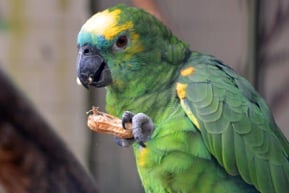
Let’s start with the most obvious motivator: FOOD. Food is a very effective motivator because it meets a basic need for survival rooted deep in animal instincts. It’s also effective because animals simply enjoy eating food! Even if your pet has just finished a meal, chances are they will still be willing to munch a treat. (Humans are like this too—we don’t eat ice cream after a meal because we need it to survive. We just enjoy a sweet treat for dessert!) Food is a great motivator for many animals due both to their inherent drive to seek out food and because of the enjoyment that food brings, and can help encourage your animal to learn and follow training consistently.
Note that food may not be used for motivation or cues during therapy animal visits, so your goal should be to use the food for motivation early in training. Over time your animal should learn to engage in the preferred behaviors without needing the food to prompt them.
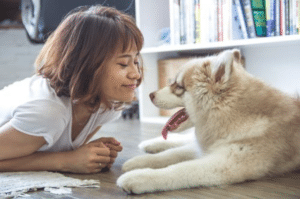
Chances are, if you’re considering training your pet to be a Pet Partners therapy animal, it’s because they enjoy being in the presence of others. Pet Partners–eligible animals are social and motivated to do what’s likely to result in positive attention. For this reason, animals can be motivated by a lively “good boy!” or a smile from their handler. Knowing that they have done something that makes their human happy can be a driving force for our therapy animals.

If someone asked you what your animal’s favorite toy is, you can probably immediately describe that fuzzy hedgehog, squeaky ball, or well-used rope. Using toys during training is an excellent way to motivate your animal to participate. Toys can be an appropriate and fun way to engage with clients during visits, and can keep your animal motivated and happy as well. If you use a specific toy during training that your animal really enjoys, that toy can carry over to maintain motivation during therapy animal visits. Consider bringing that “special” toy on visits that only you will use during breaks for stress relief. By having a separate toy that’s used only for visiting, you maximize infection control and your animal might be more interested because they don’t play with this toy on a regular basis at home.
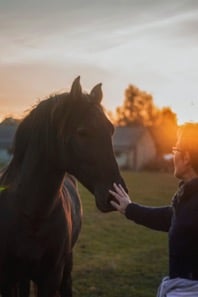
Often our animals are motivated primarily by our affection. Whether this takes the form of a long snuggle session or quick pat on the head, your animal will be encouraged by your support and affirmation and may be more willing to perform the same action again and again. And since affection is the reward animals will receive during therapy animal visits, it’s a motivational tool that’s always appropriate.
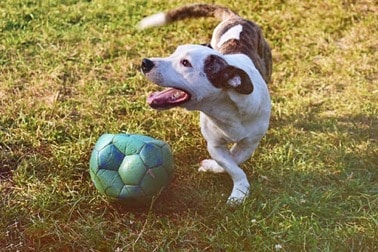
When humans play, we do so because of the inherent joy that it brings. The same goes for animals, which is why it’s a fantastic motivator during training. A game of catch, a swim in the pool, or a visit with another animal might be just the cheerleader your animal needs to be enthusiastic about training. Play can also support learning; teaching your animal to wait before picking up the toy you’ve thrown or to leave an item and come to you instead can help them learn skills that are useful on visits, in addition to giving them fun things to do.

Animals can sometimes be driven to obey by fear due to instinctive concerns about danger. Motivation through fear (such as hitting, kicking, forceful physical handling, and yelling) can seem to be effective because it is so deeply rooted in our animals’ instincts.
While fear-based training methods may be effective in the short term, using fear is extremely detrimental to an animal’s welfare, as well as to their trust in their handler, which is a crucial foundation for any therapy animal team. It can also lead to negative and even dangerous reactions if the animal feels threatened by the actions causing them fear.
Pet Partners does not support the use of training animals through negative or fear-based means. In fact, a team may be deemed “not appropriate for visiting” during an evaluation if a handler uses negative or fear-based techniques in handling their animal. All training for therapy animals should use positive, force-free methods, such as the motivators listed above, to train and prepare for your team evaluation and volunteering.

While determining motivators is just the first step in training your animal to become a Pet Partners registered animal, we hope you are excited about the opportunity to find what your pet responds to and how they operate. This will deepen your bond and improve training outcomes so that you can confidently take your next steps as a Pet Partners therapy animal team.